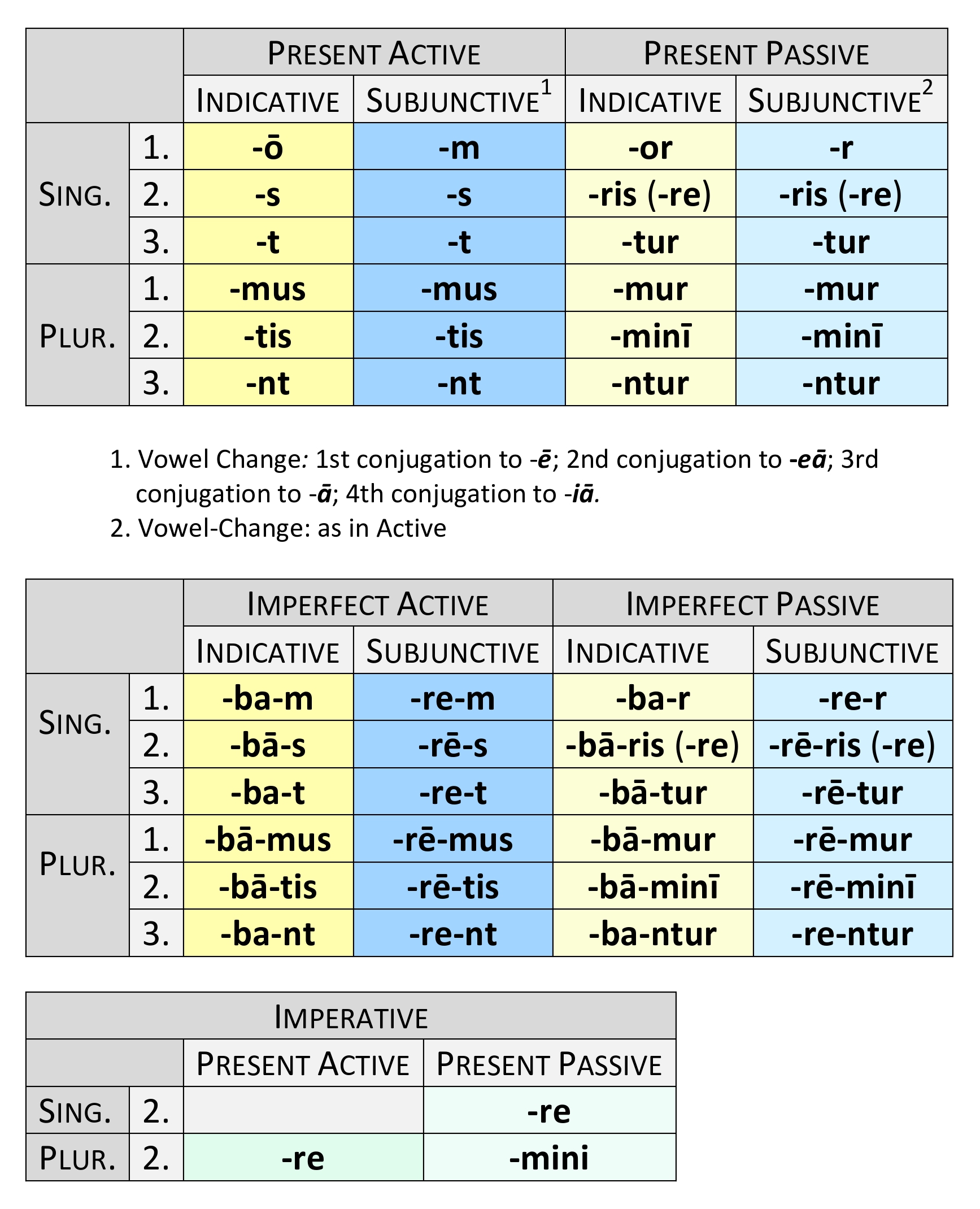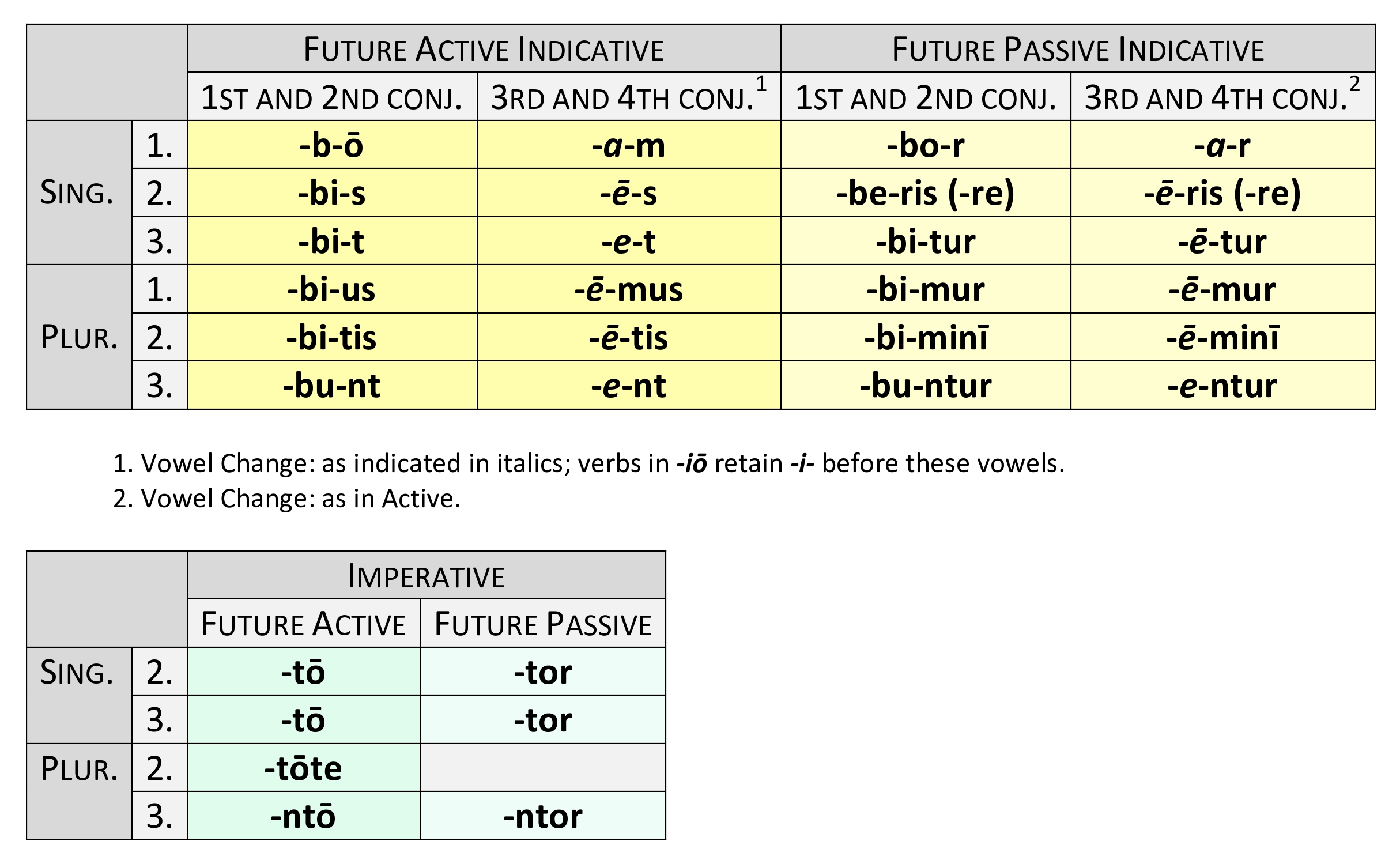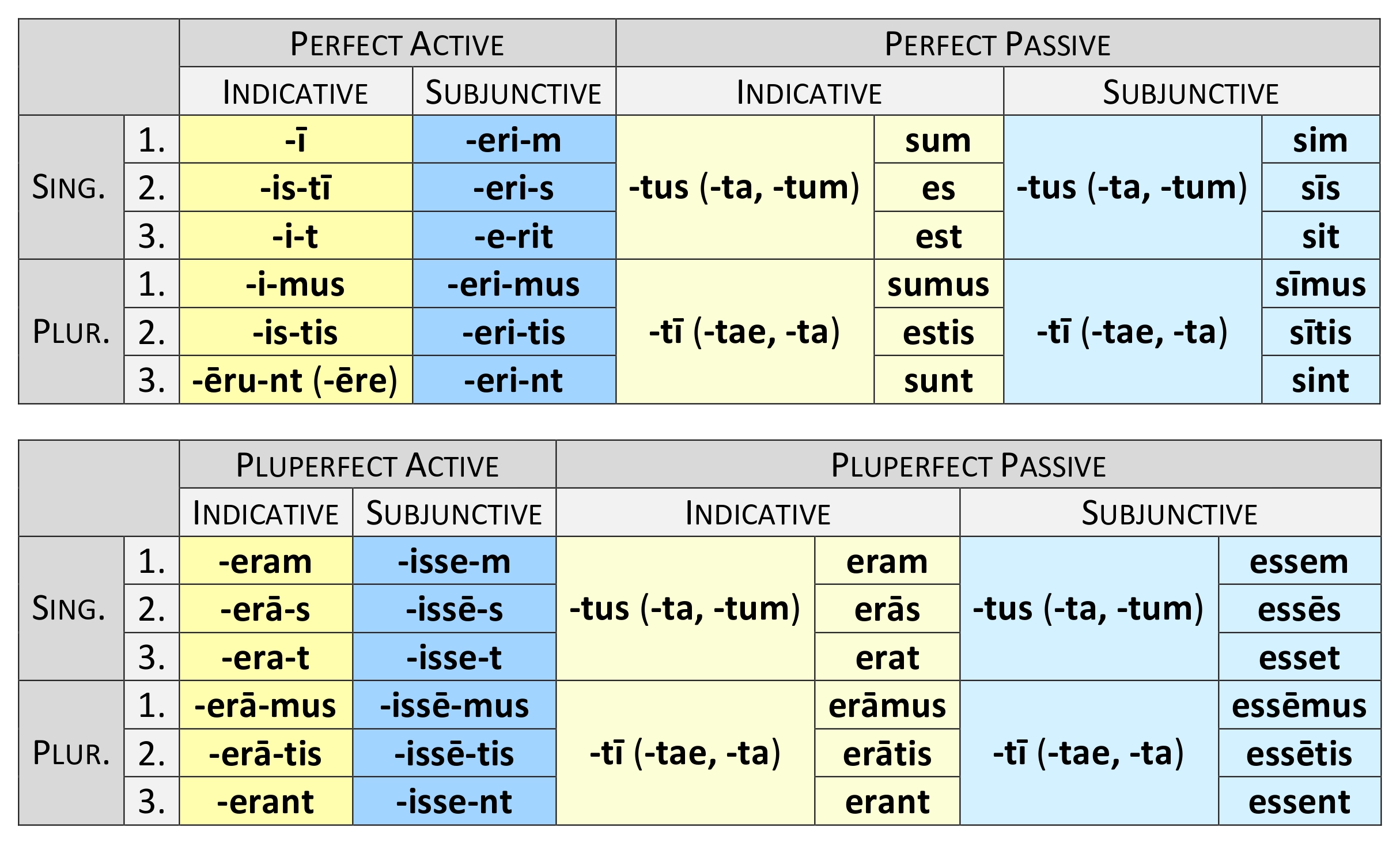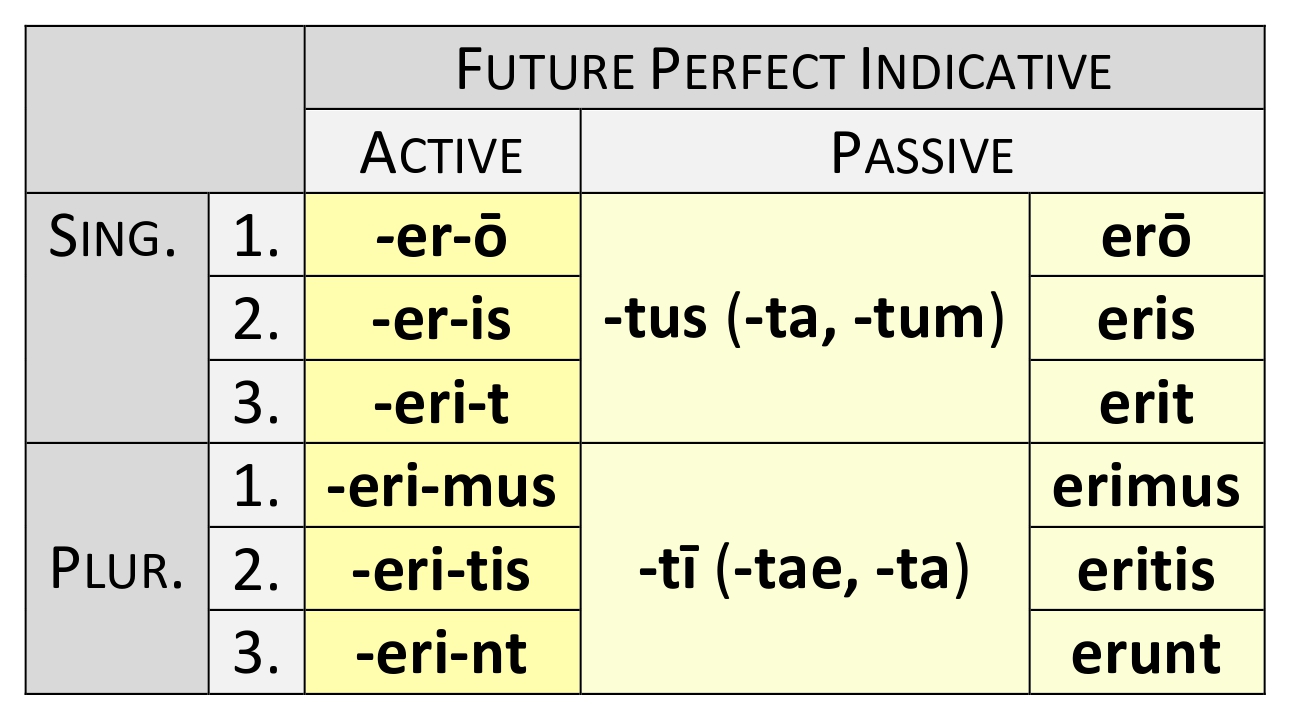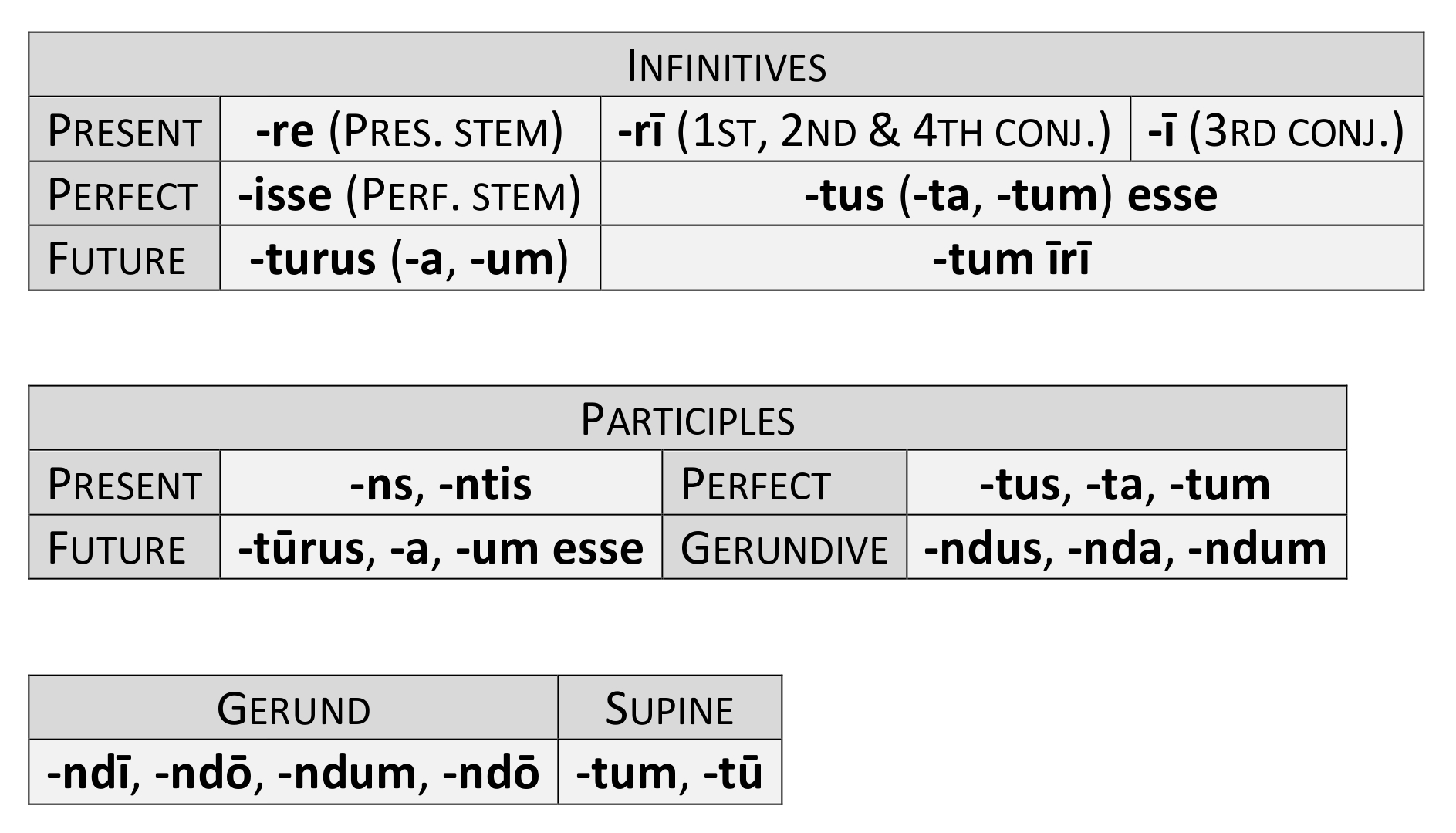CONJUGATIONS
VERB ENDINGS
165. Every form of the finite verb is made up of two parts:
- The STEM (see § 24). This is either the root or a modification or development of it.
- The ENDING, consisting of—
Thus in the verb vocā-bā-s (you were calling) the root is VOC, modified into the verb-stem vocā-, which by the addition of the ending -bās becomes the imperfect tense vocābās; and this ending consists of the tense-sign bā- and the personal ending (-s) of the second person singular.
166. The Verb endings, as they are formed by the signs for mood and tense combined with personal endings, are—
For convenience a table of the Noun and Adjective forms of the verb is here added.
167. A long vowel is shortened before the personal endings -m (-r), -t, -nt (-ntur).
ame-t for older amē-t
habe-t for habē-t
mone-nt, mone-ntur
